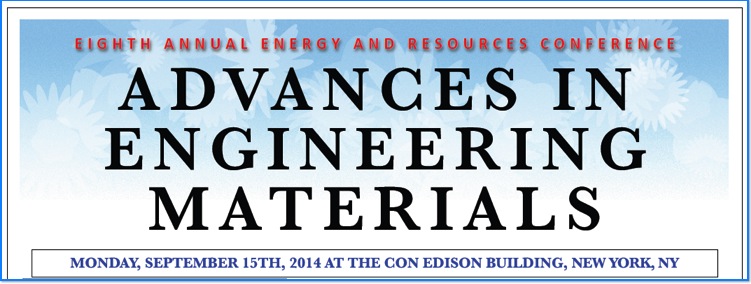
To reserve for 2014 Energy & Resources Conference or Pay by Credit Card or Check.
About the Unisphere - This is still the world's largest globe, designed as the centerpiece for the 1964-65 New York World's Fair. Its diameter of 120 feet far exceeds that of its nearest rival, the 72-foot Daily Planet in Raleigh, NC. Twelve stories tall, weighing 700,000 pounds, the Unisphere is somehow even more impressive now than it was 50 years ago. It was built in just over five months, unveiled with the opening of the Fair on April 22, 1964, and made of stainless steel so it will never rust. It is a Landmark Site, as designated by the NYC Landmarks Preservation Commission.
Some details about its design and construction (from the NYC Landmark Preservation Commission’s report ): Designed by Gilmore D. Clarke, the Unisphere was engineered, fabricated, and donated to the fair by the United States Steel Corporation (USS). Its components were manufactured by the company's American Bridge Division at Ambridge and Harrisburg, Pa., and assembled at the World's Fair site. The original published rendering of the Unisphere closely resembles the structure as eventually built, except for a different arrangement of fountains. The pool and the fountains were designed by Gilmore D. Clarke's landscape architecture firm, Clarke & Rapuano, with J. Samuel Hamel of the engineering firm Hamel & Langer serving as a consultant. Both firms worked together to produce many of the fair's other pools and fountains.
Clarke's design for the Unisphere -- a steel cage composed mainly of curving structural members, which represent the lines of latitude and longitude supporting representations of the continents and three suspended orbital rings -- presented several engineering challenges. As an open structure, virtually every part is visible and exposed to the moisture, salt air, and high winds of the local climate. The USS engineers chose stainless steel as the Unisphere's major element because of its weatherproof qualities and resistance to corrosion. They studied different surface textures for the land masses to determine which would look best at various viewing distances. After testing various materials including stainless steel mesh, non-directional textured stainless steel sheeting was chosen for the land masses. To show elevation, the sheeting was built up in contours.
Despite the enormous loads that the Unisphere's shape imposes on its curving structural members, these could not be too thick, cross-braced, or irregularly spaced without compromising Clarke's proposal to feature accurate representations of the earth's meridians and parallels. In addition, the concave inner surfaces of the land masses trap the wind and create an enormous amount of drag on the structure. The distribution of its weight and the effects of the wind had to be considered and a stress transfer pattern created to insure that the Unisphere would retain strength and stability at all times. By varying the sectional dimensions of the meridians and parallels, the engineers were able to achieve structural stability without compromising the design. The three polished steel orbit rings are anchored to the superstructure by aircraft cable. Altogether, the Unisphere contains a mile and a half of meridians, parallels, and orbit rings. The 700,000 pound globe is supported by an inverted tripod base made out of a lowalloy, high strength steel and weighing 200,000 pounds, anchored to the foundation by steel bolts having a minimum yield strength of 100,000 pounds per square inch. The poured concrete foundation incorporates the Perisphere's piling ring, which remained intact underground from the 1939-40 World's Fair. It was reinforced with 600 additional 100-foot piles.
Return to conference home page



